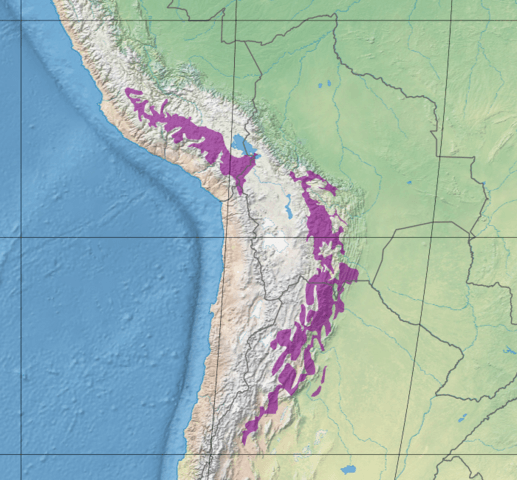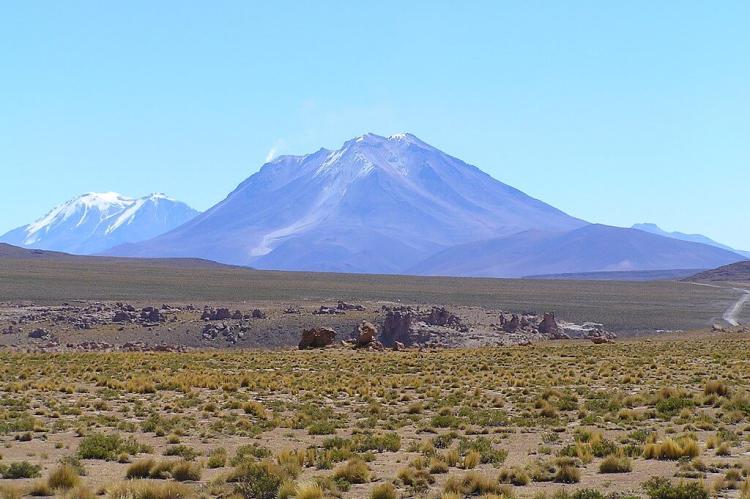The Central Andean Puna: Unveiling the High-Elevation Wonders
The Central Andean Puna is a high-altitude montane grassland ecoregion of rugged resilience stretching across southern Peru, Bolivia, and northern Argentina. Despite challenging environments, it's brimming with life against a backdrop of snow-capped mountains and turquoise lagoons.
The Central Andean Puna
Unveiling the High-Elevation Wonders
Nestled high amidst the jagged, snow-covered peaks of the Southern Andes lies the Central Andean puna - a land of rugged resilience crafted from pristine pampas and awe-inspiring altiplano plains. This high-altitude montane grassland ecoregion stretches across the southern regions of Peru, traversing the rugged Bolivian Altiplano and dipping into the northern corners of Argentina. Despite the challenging environments, the puna is brimming with life, defying the odds against a backdrop of snow-capped colossi and turquoise lagoons.
Geological Marvels
The Central Andean puna ecoregion is a stunning landscape that showcases breathtaking contrasts. It is a convergence of towering mountains, permanent snowfields, and expansive plateaus that create a mosaic of incredible beauty. This rugged terrain spans an altitudinal range between 3,200 and 6,600 meters (10,500 and 21,600 feet) and is characterized by its mountainous topography, deep valleys, and high lakes. Snow-capped peaks cast long shadows over vast mountain pastures, while rocky plateaus and meandering valleys add to the ecoregion's diverse tapestry.
Climate and Vegetation
The Central Andean puna is a challenging environment but still boasts diverse plant life. The annual rainfall in the region ranges from 250 to 500 millimeters (10 to 20 inches), while temperatures can vary from below freezing to 15 ºC (59 ºF). This high-elevation montane grassland experiences a cold, semi-arid climate. The vegetation is drier than in other Puna regions, and the landscapes are characterized by open meadows with rocks and sparse vegetation, including bunchgrass, herbs, and lichens. The ecoregion is home to unique formations, such as bofedales, peat bogs, and tolares - small bushy species that thrive in harsh conditions.
Biodiversity Hotspot
The Central Andean puna is a biodiversity hotspot, hosting a variety of endemic species of both flora and fauna. This region is home to a diverse range of plant life, including hardy grasses such as Calamagrostis, Agrostis, and Festuca, unique formations of tolares and yaretales, and a rich tapestry of plant species that cannot be found anywhere else on Earth. The fauna of the Central Andean puna is equally diverse and unique. Many indigenous species, such as the Andean cat and the puna mouse, call this rugged landscape home. At the same time, the avian inhabitants include the royal cinclodes, tamarugo conebill, Jame's flamingo, and giant coot, all endangered species.
Bastions of Conservation
Within this ecoregion lie crucial protected areas. These areas are bastions of conservation, safeguarding the unique biodiversity and ensuring a harmonious coexistence between nature and human activities. Protected natural areas within the Central Andean puna ecoregion include:
-
Salinas and Aguada Blanca National Reservation: A protected area in Arequipa and Moquegua, Peru. The primary purpose of this area is to protect the local flora, fauna and landscape formations. It spans an area of 366,936 hectares (906,718 acres), covering the headwaters of important local rivers like Yura and Chili.
-
Tariquía Flora and Fauna National Reserve: Located in the Tarija Department of Bolivia, it protects a large portion of cloud forest and a smaller polylepis woodland on the eastern slopes of the Tarija's mountains. The Reserve provides a habitat for rare animals such as the spectacled bear and hundreds of bird species, including the threatened rufous-throated dipper and the spectacular military macaw.
-
Cordillera de Sama Biological Reserve: Located in the Tarija Department of Bolivia, it protects part of the Central Andean puna and Bolivian montane dry forests ecoregions.
-
Aymara Lupaca Reserved Zone: This protected area in southeastern Peru was set up in 1996, with around 200,000 ha (494,000 acres). It was expanded in January 2006, but the decree was repealed in 2009. The zone was established to protect the flora and wild fauna of the Central Andean puna and to preserve the ruins of Tanqa Tanqa of the Lupaca culture shaped by Chullpas and the funeral towers, fortifications and other archaeological sites that could be studied.
-
Cotahuasi Subbasin Landscape Reserve: A protected area in Peru in the Arequipa Region, La Unión Province. It covers part of the Central Andean puna and the Sechura Desert ecoregions.
Conclusion
The Central Andean puna ecoregion is a remarkable example of the resilience and adaptability of life in extreme environments. Our responsibility is to protect this delicate ecosystem by implementing sustainable conservation practices to preserve its rich biodiversity for future generations. This can be achieved by raising awareness, promoting scientific research, and advocating for preserving its unique flora and fauna. By doing so, we can ensure that this highland realm remains a thriving sanctuary of life amidst the towering peaks of the Andes.

Map depicting the location of the Central Andean puna (in purple).
